Australia has many fish-eating birds, some that are obvious and some that might not be so obvious. This post will explore some common fish-eating birds that call Australia home. There are also a couple that you may not expect.
An interesting fact before we begin…did you know that a fish-eating bird is called a piscivore? This comes from the Latin word for fish, Piscis.
1. Pelican
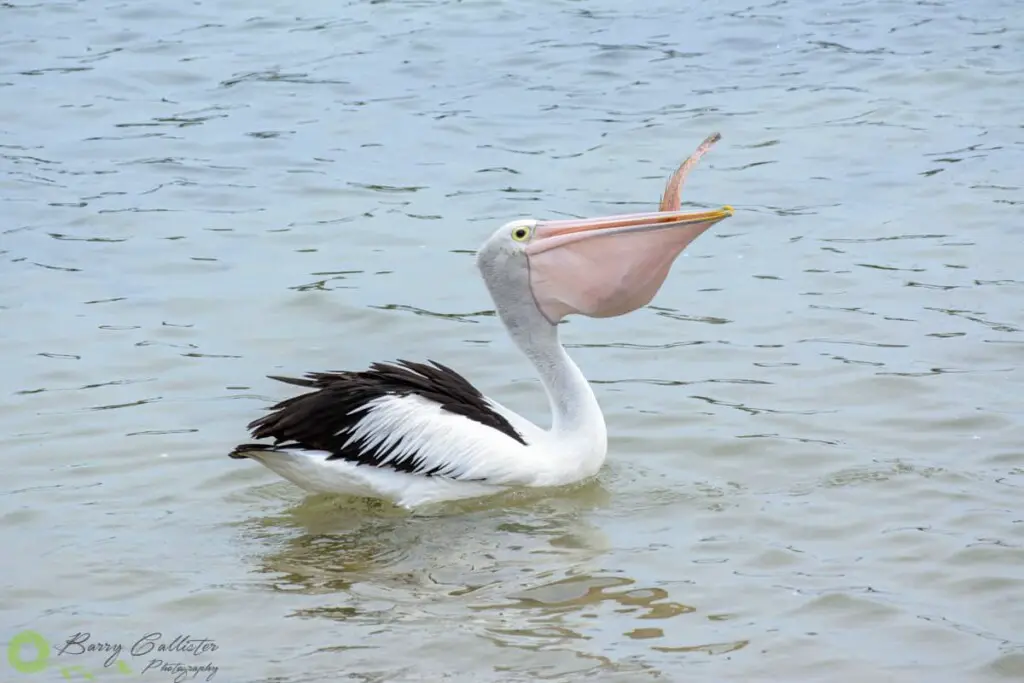
If you ask anyone to name a bird that eats fish, they will most likely answer “Pelican.” You may even be familiar with the limerick:
A wonderful bird is the Pelican.
His beak can hold more than his belly can.
He can hold in his beak
Enough food for a week!
But I’ll be darned if I know how the hellican?
– Dixon Lanier Merritt
The Australian Pelican can be found throughout Australia, Papua New Guinea, and Indonesia. There have even been reported sightings as far away as New Zealand and some western Pacific islands?!
The Australian Pelicans bill is around 40 to 50cm long and can hold around 13 liters of water. If you’ve ever seen a Pelican feeding, you will know they love the fish! They will maneuver the fish inside their bill until its head is pointing towards their throat, then throw back their head and swallow it whole.
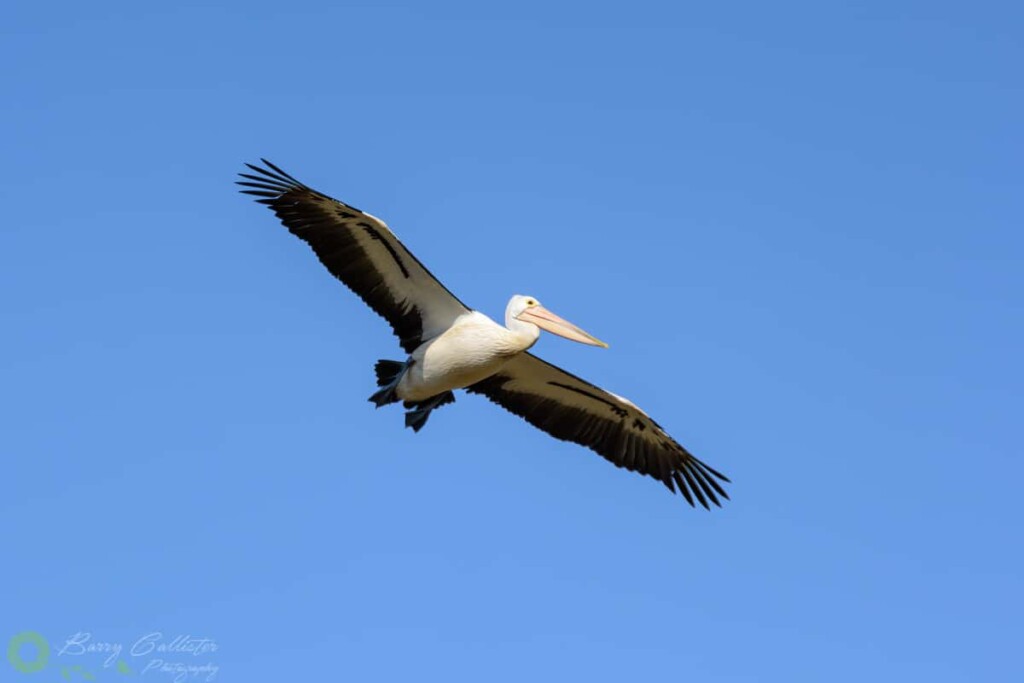
A flying Pelican is an incredible sight. They glide over with ease, using their 2.3m -2.5m wingspan to full advantage. Using thermals in the air they can remain in flight for up to 24 hours. They soar to heights of 1000m but have been recorded at 3000m.
Discover all the reasons birds fly in circles in this article here on Birdwatch World.
2. Pied Cormorant
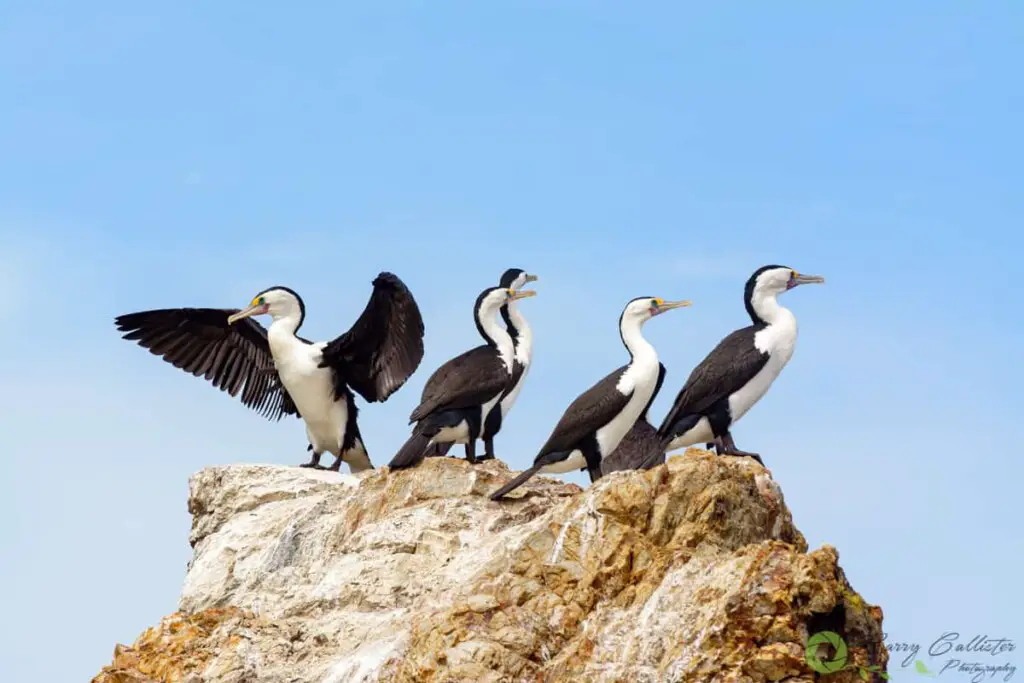
A large black and white bird with webbed feet and a long, grey hooked bill. Pied Cormorants are not the most attractive of sea birds, though their orange eye patch, blue eye-ring, and green eyes add a splash of color.
Pied Cormorants feed mainly on fish but will also eat crustaceans and mollusks. They are diving birds that catch, and sometimes even eat their fish underwater, hence the need for webbed feet.
These fish-eaters are found throughout the mainland of Australia, though more common in the south.
They flap their wings almost constantly during flight, only soaring occasionally. For a bird with a 110-113cm wingspan and a body that is only around 65-85cm tall, this is a lot easier than for a large bird like a Pelican.
3. Eastern Osprey
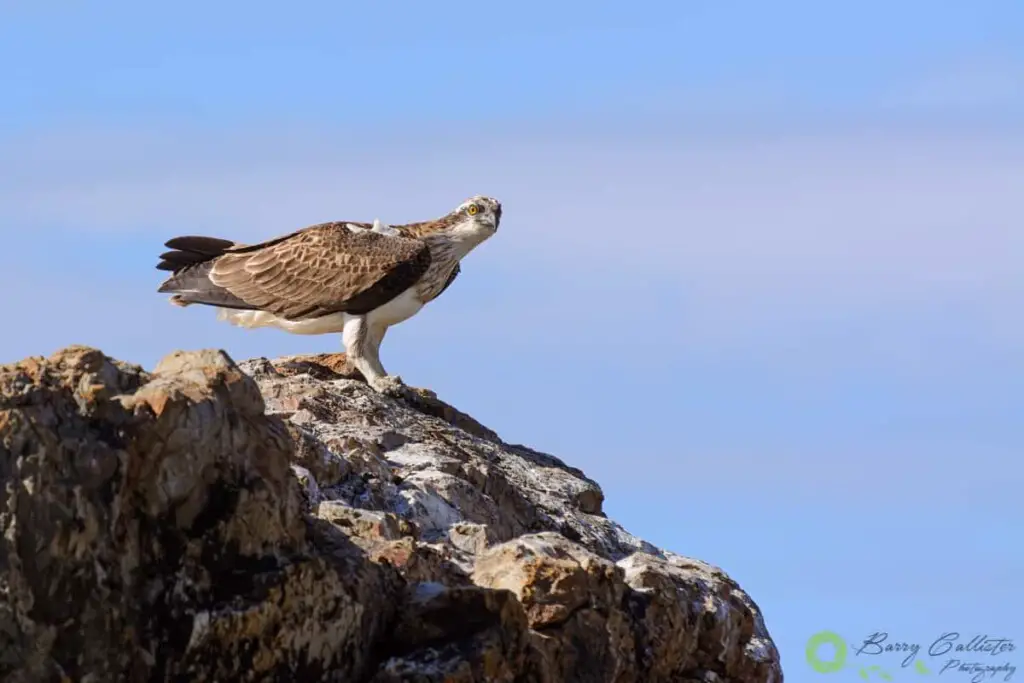
In my opinion, the most impressive bird in this fish-eating lineup. The Eastern Osprey is a medium-sized bird of prey that is found on the coast and in wetlands of tropical and temperate Australia.
They feed mainly on medium-sized live fish. To see an Osprey hunt is one of the most incredible sights in nature. They will fly above the water with their eyes focused on the surface below. Drawing their wings back, they will then dive down, extend their legs and talons and impact the water. Sometimes, they will even go right under the water.
Not every hunt is successful. I have watched Osprey have 4 or 5 failed attempts before moving on to a new location or giving up entirely. This is not surprising as it must take an incredible amount of energy to take flight from the surface of the water.
When taking off from the water, they will beat their wings forward and backward instead of up and down to avoid contact with the water’s surface. They are a truly skilled hunter.
Discover more about what Ospreys eat in this Birdwatch World post.
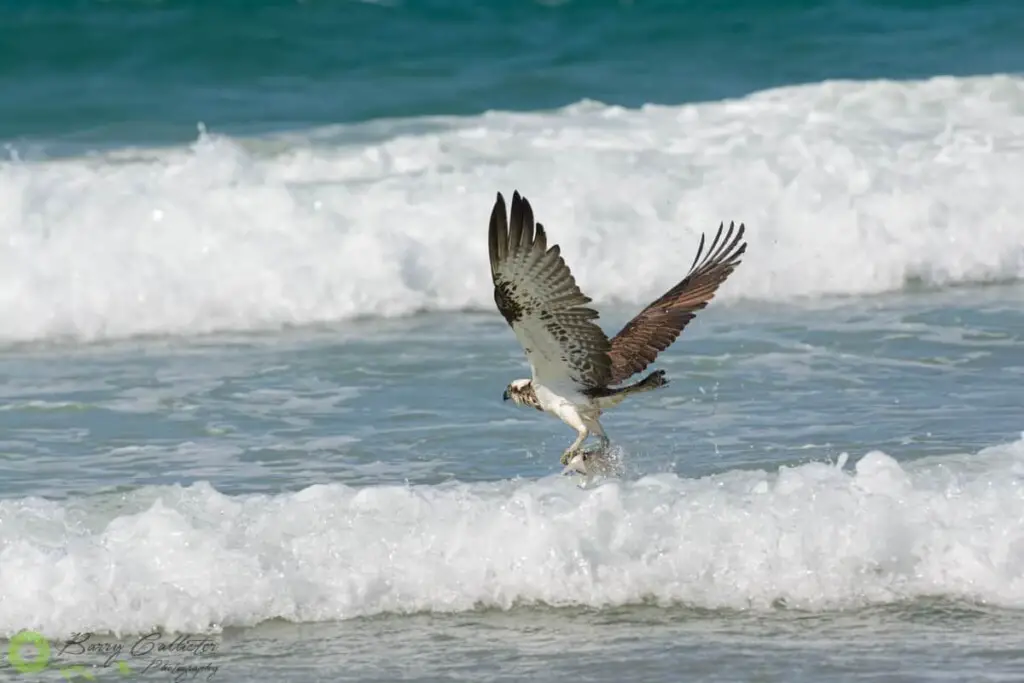
Ospreys do not swallow their fish whole but instead rip it apart with their strong, hooked beaks. They will fly their catch back to a perch in a tree or on rocks, hold it down with their talons and rip in.
4. Australasian Gannet
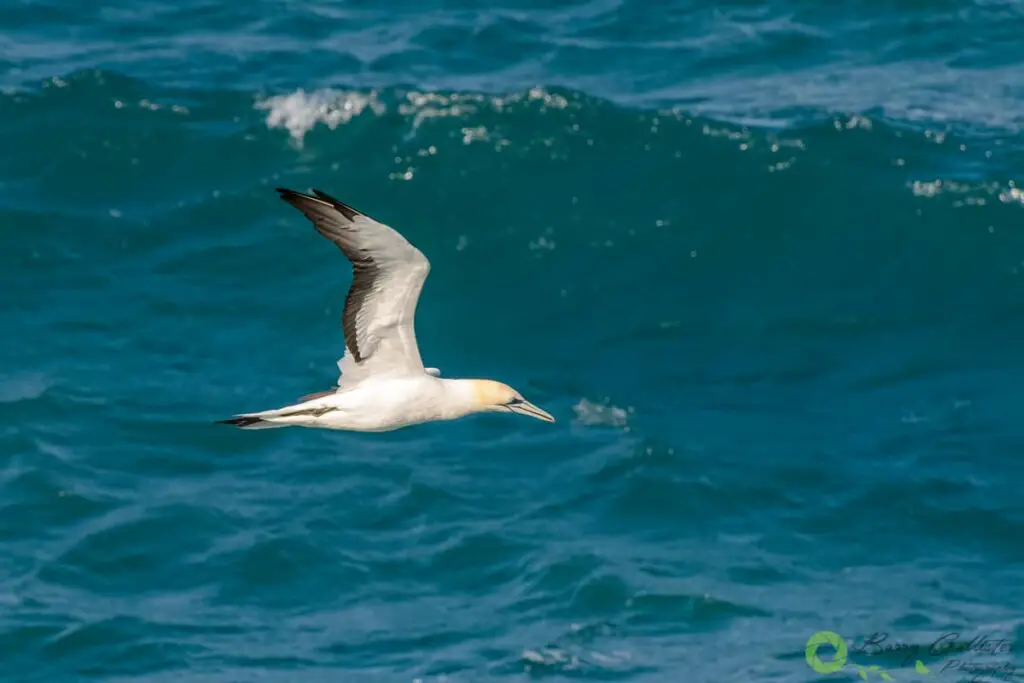
These birds are expert fishers and incredible to watch. Quite a large bird at between 84-91cm long with a wingspan of up to 2 meters. However, their size does not hinder their hunting skills.
Gannets will soar up to 10 meters above the water before plunging towards the surface, drawing their wings back flat against their bodies and piercing into the water like huge, feathered arrows.
They generally only spend around 10 seconds beneath the water and will eat their catch while still submerged, or immediately after they surface.

They grip fish with small backward-pointing serrations along the edges of their bills and swallow the catch whole.
Australasian Gannets are found all across southern and south-eastern Australia, and all the way to New Zealand. Their population is currently very healthy and in fact, seems to be growing.
5. Sacred Kingfisher
How could a bird with the name Sacred King-fisher not eat fish?! Well, you might be surprised to know that this species of Kingfisher rarely eat fish! They predominantly hunt on land, feeding on crustaceans, reptiles, insects, larvae of insects, and the occasional fish.
Sacred Kingfishers were so named by the Polynesians who considered them to be holy, believing they had control over the waves.
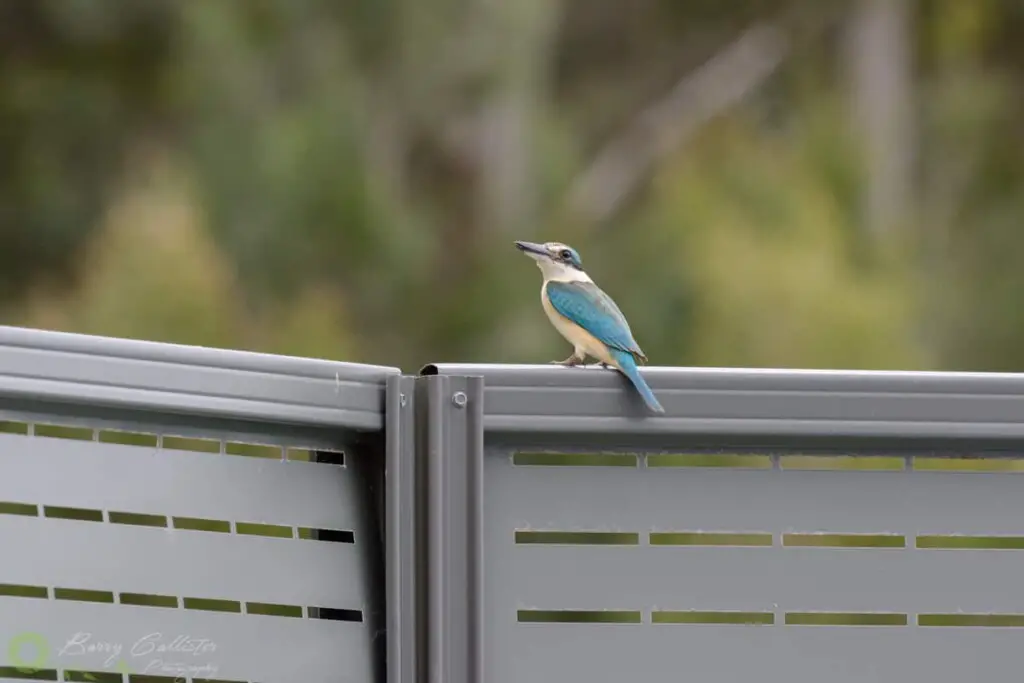
These birds can be found throughout coastal regions of mainland Australia and also on islands from Australasia to Indonesia and New Zealand.
Measuring 20-23cm long, with a wingspan of around 29-34cm this bird is one of 56 woodland species of Kingfisher.
Occasionally we will have Sacred Kingfishers visit our backyard to hunt insects on the lawn or from our swimming pool. The photo above was taken on our back fence, just meters from the house.
Discover how you can birdwatch from home in this post on Birdwatch World.
6. Brahminy Kite

A striking chestnut brown bird of prey with a white head and white at the tip of its tail. This bird is widely spread throughout Asia and is also found in northern Australia from the coast of Western Australia to northern New South Wales.
Also called a Red-backed Sea Eagle, Rufous-backed Sea Eagle, or a White-headed Sea Eagle.
These medium-sized raptors feed on carrion (dead animals), insects, and fish. They catch live prey or carrion from the surface of the water or the treetops. Brahminy Kites are also known to steal prey from other fish-hunting birds. It’s not uncommon to see them with a crustacean either, I have seen them eating crabs while flying.
In Indonesia, the Brahminy Kite is the official mascot of Jakarta. Also held in high regard in Hinduism, the bird is considered to represent Garuda, the sacred bird of Vishnu.
7. Crested Tern
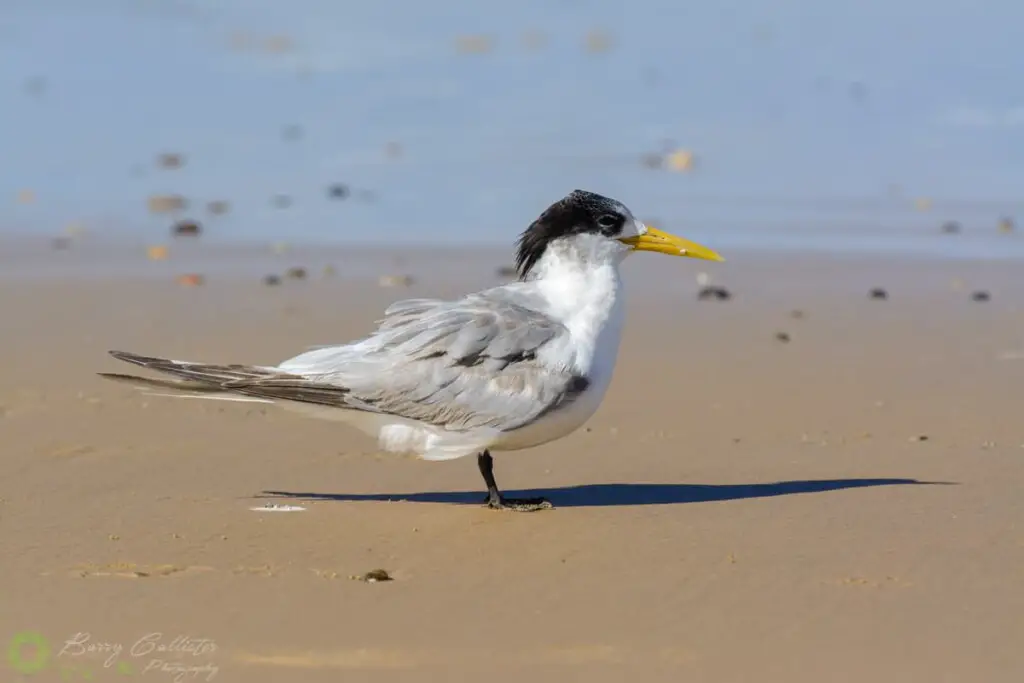
These common shorebirds feed on small surface fish such as sardines and anchovies. They will also eat cephalopods, crustaceans, and insects.
They are a beacon for fishermen who look for them flocking over the water’s surface to lead them to schools of fish. They dive into the water to a depth of 1m to catch their prey and will eat it while floating on the surface, or carry it back to shore to feed their young.
There are few places on the coast of Australia where you cannot see Crested Terns. They will rest on the beach, sometimes with other species such as Seagulls.
Sometimes called a Greater Crested Tern, these are the 2nd largest species of Tern in Australia, an adult measuring 46-49cm long with a wingspan between 88 and 105cm.
Discover 10 cute Australian birds in this article right here on Birdwatch World.
8. Blue-winged Kookaburra
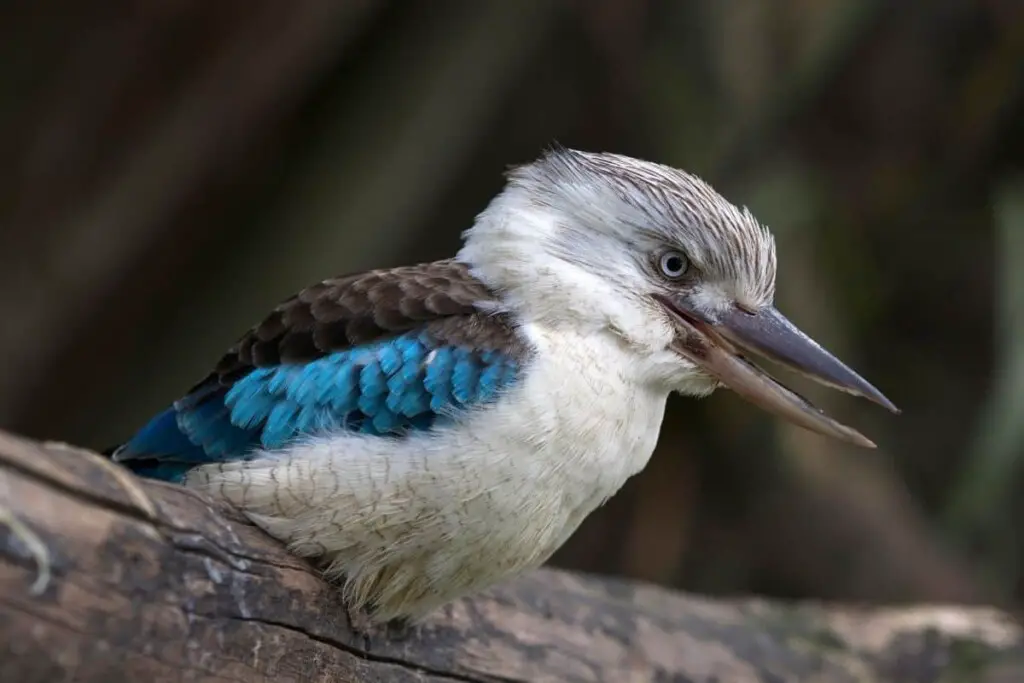
Strangely enough, though Australia is considered the home of the Kookaburra, we only have two of the 4 species that exist.
The Laughing Kookaburra is found in eastern and south-eastern Australia and the Blue-winged can be found in northern Australia and southern New Guinea. There is also the Rufous-bellied Kookaburra and the Spangled Kookaburra, both found in New Guinea.
The Blue-winged Kookaburra is the world’s largest kingfisher. It feeds on reptiles, frogs, insects, fish, crayfish, scorpions, spiders, snakes, earthworms, small birds, and other mammals. As you can see, it’s not fussy?!
These striking birds resemble their southern cousins but have more blue on their wings and white eyes. They are also smaller than the Laughing Kookaburra and do not have a dark mask area on their faces.
The most distinguishing feature of a Kookaburra is their “laughing” call. Blue-winged Kookaburras have a call that is similar to the southern species yet entirely different also. Play the video from Wild Ambience below to listen:
In contrast, this is the sound of a Laughing Kookaburra:
9. Royal Spoonbill
A list of unusual-looking birds might include the Royal Spoonbill. This large white waterbird with its spoon or spatula-shaped bill, yellow eyebrows, and long, flowing crest at the back of its head is nothing if not unusual-looking.
Its diet consists mainly of fish and shrimps, though it will also eat other crustaceans and insects. The spoon-shaped bill is perfect for sweeping through shallow waters to find a meal.
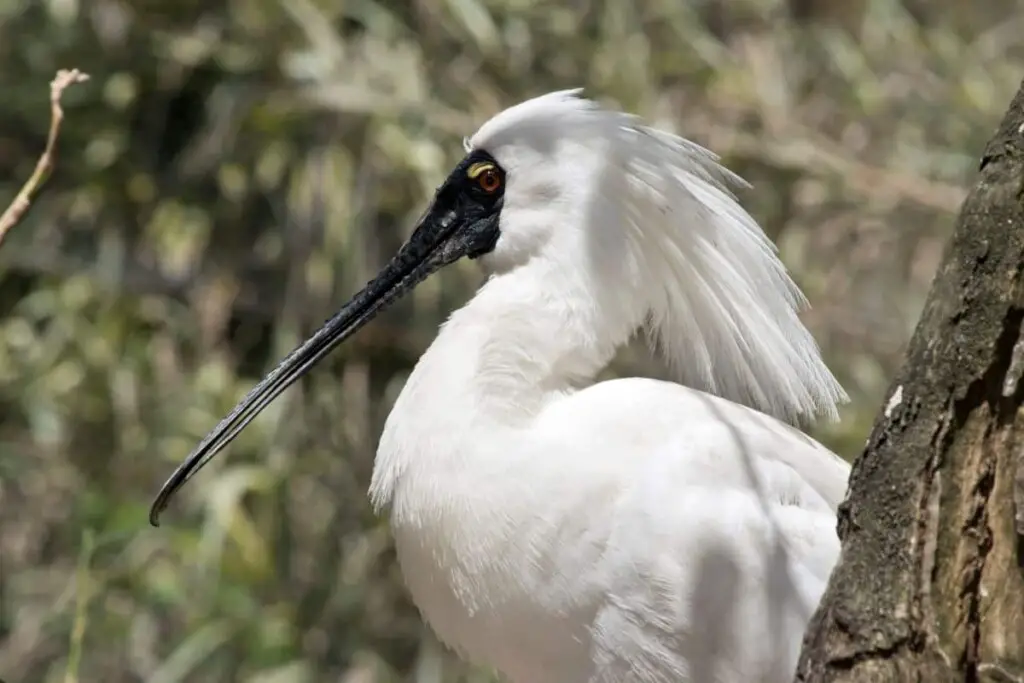
These birds are found in fresh and saltwater wetlands in Australia, New Zealand, Indonesia, Papua New Guinea, and the Solomon Islands.
Royal Spoonbills are large birds at around 80cm tall. They have a wingspan of 120cm and fly with their neck fully extended.
I might have been a little harsh in calling them “unusual-looking;” they really do look quite royal.
Speaking of unusual…the birds in this post here on Birdwatch World will shock you.
10. Sooty Oystercatcher
The final bird in this fish-eating bird list is the Sooty Oystercatcher. True to their name, they do eat mollusks but will also feed on crabs and other crustaceans, marine worms, starfish, sea urchins, and small fish.

Sooties (as I affectionately call them), are small birds between 42-52cm in length. They have a stunning orange-red beak and orange-red eyes to match. That long bill which can be anywhere from between 5 and 8cm long is used for stabbing into the sand to get at worms, or to crack open mollusks.
Sooty Oystercatchers will often hang out in pairs on the rocks or sand near the shoreline. It’s amusing to watch them foraging in the shallows, as they will rarely get wet to above their knees, often scampering up the beach if a small wave comes.
As with a lot of other bird species, the Sooty Oystercatcher is listed as Vulnerable in New South Wales. Its population is fine in other states of Australia.
Further Bird Reading
If you have enjoyed reading this post about fish-eating birds from Australia, you might like to read these posts:
Both of these posts contain some great information from experts in the field of birds and their behavior.
References:
- Find A Bird – birdlife.org
- Australian Pelican – The Australian Museum
- Kookaburra videos – Wild Ambience
- Additional bird information – Wikipedia

